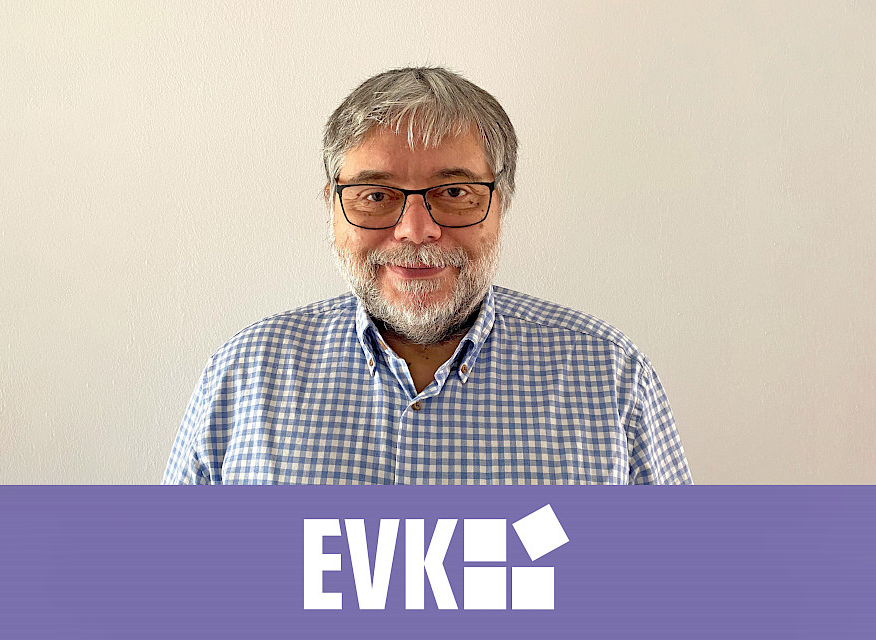An essential factor for our success are committed and motivated employees. In 2022 EVK celebrates its 35th anniversary, but one of our most consistent employees also celebrates his 35th jubilee at EVK. For this special occasion, we asked Gustav – Software & Chip Designer – for a short interview about his time at EVK.
EVK is celebrating its 35th anniversary this year and you have been working for EVK for 35 years. Can you tell me how you started working for EVK back then?
That was a funny story. I was in the army at that time and was training to be an electromechanics for low-voltage current. Someone from EVK came to the hall to look for a successor, and that’s how we got in contact.
How was it back then when you started at EVK? What was the size of the team? And what was your role when you started?
The team consisted of only four people, Mrs. and Mr. Kerschhaggl, my predecessor, and another colleague. On my first day, as I said, I did the training in electromechanics for low current, which is hardware training, so I soldered a small print on my first day. However, I already mentioned at the interview that I wasn’t particularly interested in hardware but that I would prefer to do software development, so I wanted to change right at the beginning. At that point, Mr. Kerschhaggl told me that I could also develop software at our company, and that was already the end of my hardware developer career and the start of my software developer career.
Can you tell me something about the development of EVK as you experienced it?
We called it Innovation on demand back then and implemented many interesting and exciting projects. I remember when I first joined, they were building a big box. You could insert a slide tray, and the machine would check if the slides were inserted correctly and could turn them over if necessary. Another exciting project that I remember well from those days was for a motorway operator. Among other things, we developed counting software and hardware for it and installed inductive loops in the asphalt in close succession. When a car drives over it, the magnetic field changes, and current is induced so that the time between two pulses can be measured. This allowed us to evaluate whether, for example, a car or a lorry had passed, calculate the approximate speed, and also how many cars were on the road. On the one hand, this helped to plan for the toll station in advance and, on the other hand, to show the trend of decreasing or increasing traffic and the current congestion situation. That was later also used on other motorways.
That sounds exciting. How did it go on?
Not long after that, we had the opportunity to enter the recycling sector. We developed a line sensor and software to sort broken glass by colour. We were always among the first on the market. After a while, when there were already several colour cameras on the market, we started looking for new innovative solutions for our customers. We came up with the spectral topic that has been with us for a while now. In the beginning, there were no sensors of this kind with which something like this would have been possible.
What makes your work at EVK special? What excites you most about your work?
That one can always deal with exciting topics. I’ve always been interested in software development, and I like the fact that I can contribute a lot of myself, such as my ideas and also in the implementation phase. You’re always dealing with something different, and that’s the exciting thing about it. I am a person who likes to look ahead, work on new topics, and explore what is technically possible. When I started, you couldn’t imagine all the things that are already possible today. The next steps with AI are also fascinating.
What exactly does your work as a software and chip designer look like? What are your current tasks?
Two areas I cover at the moment are IT administration and my main task, software development. I work on our EVK SQALAR software, which is used for modeling our HSI systems, and I’m maintaining some of our older programs. Chip design comes from the fact that I also program FPGAs. That is more limited than on a CPU but much faster, and this speed is needed for real-time processing because the amount of data is immense.

